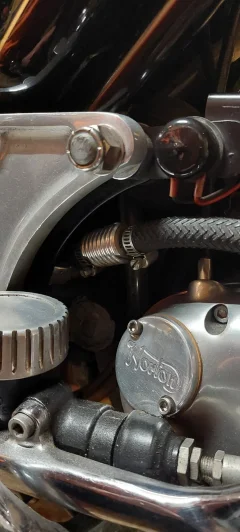marshg246
VIP MEMBER
- Joined
- Jul 12, 2015
- Messages
- 5,121
Here's a side value of the reed breathers...
A forum member (won't embarrass him) put the oil pump gasket on wrong. When he checked for oil returning, he mistook the breather return for the pump return. He rode the bike quite a bit before asking about it. Nothing was hurt (other than pride)! Had he not installed the breather, running would have filled the crankcase with oil and probably resulted in a catastrophic hydrolock.
A forum member (won't embarrass him) put the oil pump gasket on wrong. When he checked for oil returning, he mistook the breather return for the pump return. He rode the bike quite a bit before asking about it. Nothing was hurt (other than pride)! Had he not installed the breather, running would have filled the crankcase with oil and probably resulted in a catastrophic hydrolock.

